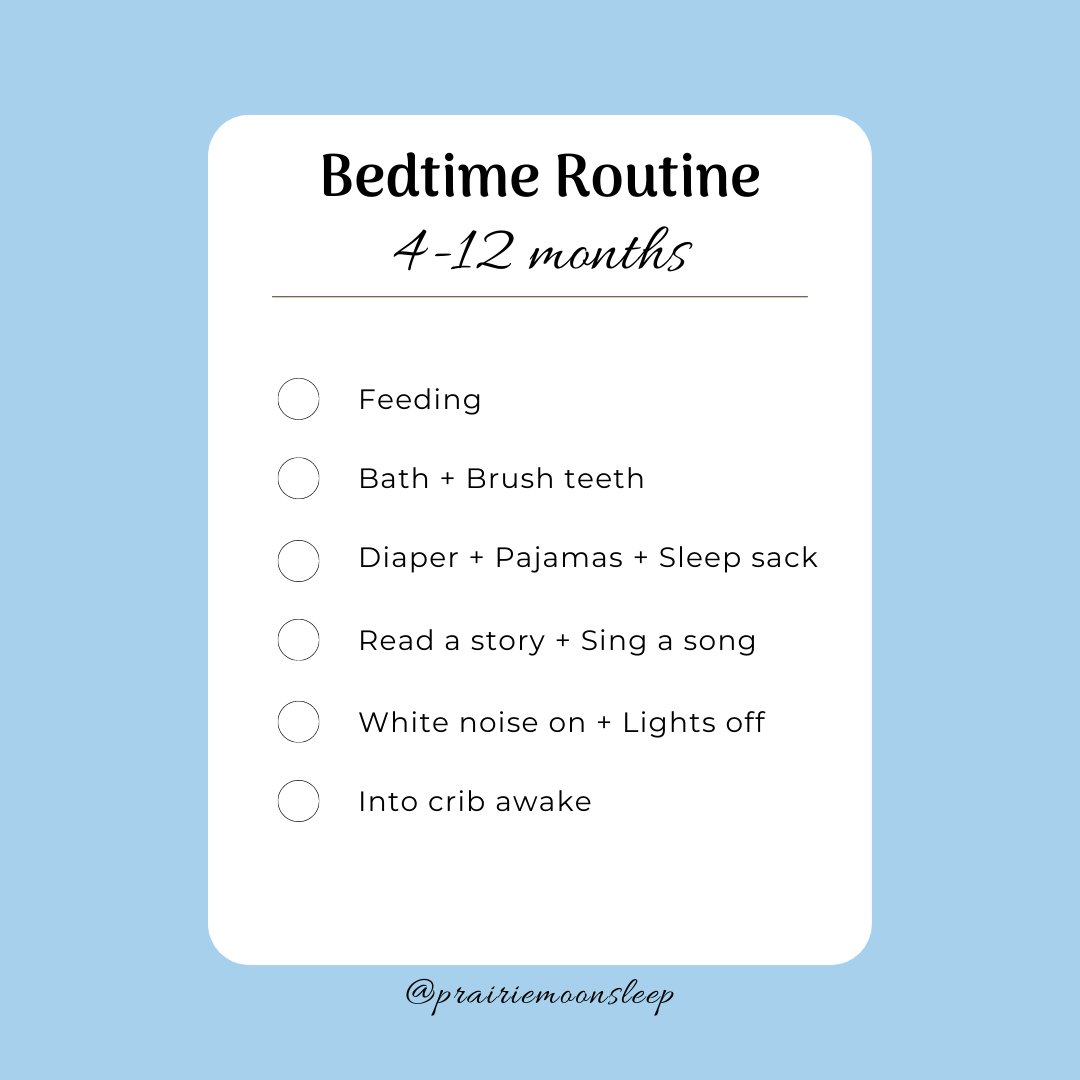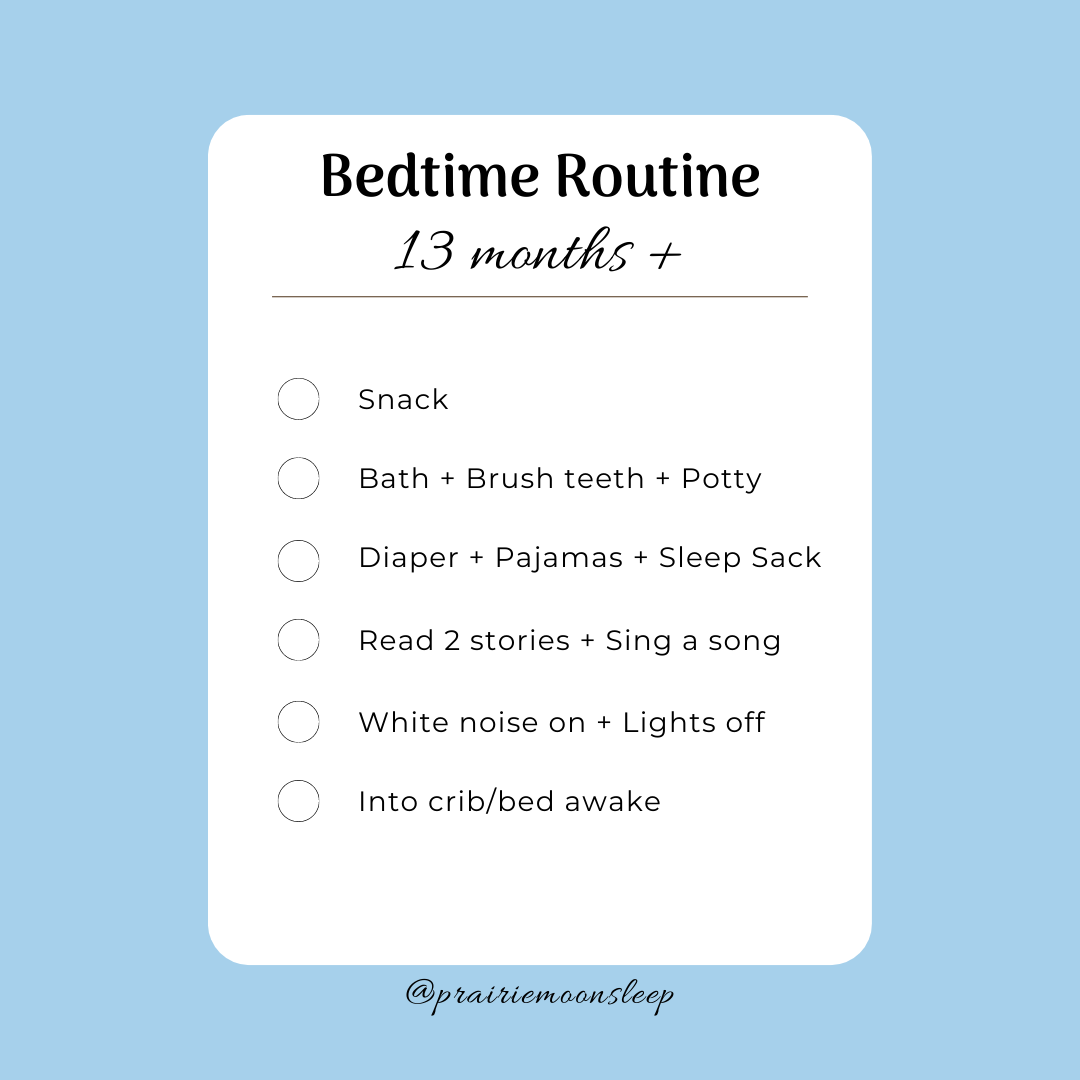It’s never too early or too late to start following a bedtime routine, and your little one will benefit in many ways. So, whether you have a newborn, a 6-month-old, or a 6-year-old, you can start establishing healthy sleep habits as early as tonight.
Following a consistent bedtime routine acts as a cueing system your child’s body and brain that it’s time to sleep and helps make the transition into sleep much easier.
Benefits of a Bedtime Routine
A solid bedtime routine has many benefits including:
- Helps soothe and calm your child
- Gives your child a sense of security
- Teaches self-care
- Promotes parent-child bonding
- May help improve mood, stress levels, and behaviour
- Children find comfort in structure and predictability (because they always know what happens next)
- Makes for a smoother transition from playtime to bedtime (which means less resistance to bedtime)
- Helps your child develop healthy sleep habits now and for the future
A soothing bedtime routine also means that your child is more likely to:
- Fall asleep earlier
- Take less time falling asleep
- Sleep longer
- Wake up less during the night
Creating Your Child’s Bedtime Routine
A good bedtime routine should consist of the same activities in the same order before your child’s bedtime each night. These activities should be soothing for your child and enjoyable for everyone involved.
Your child’s routine should be the same each night so that they know exactly what to expect, whether it’s Mom, Dad, or anyone else putting them to bed.
Here are some ideas you can include in your bedtime routine:
- Nutritious snack or bottle/breastfeeding
- Drink of water
- Bath or Wash hands & face
- Brush teeth
- Brush hair
- Potty
- Diaper change
- Pajamas
- Sleep sack / Swaddle
- Massage
- Read stories
- Sing songs
- Talk about the day
- Kisses goodnight
I recommend that your child’s bedtime routine should last between 20-30 minutes from start to finish – long enough for your child to relax and get ready for sleep, yet not so long that they get overtired.
Example Bedtime Routines:



Should a feed be part of your bedtime routine?
For a newborn, your routine should always include a full feed (either nursing or bottle) to ensure baby’s tummy is full.
If your baby is between 4-12 months of age, I recommend having the feed as the first step of the routine. This is to help prevent any sleepiness during the feed, which will ensure a nice full feed and discourage any feed-to-sleep association. Another nice thing about having the feed as the first step in the bedtime routine is that dad can just as easily do the rest of the routine on his own at least some of the time.
Does a bath need to happen every night?
If it works for your family, I recommend doing a bath every night for several reasons:
1) A bath is such a significantly different experience that it acts as a great cueing system that bedtime is near.
2) For toddlers and older children that protest bedtime, starting with a bath can make for a much easier transition because typically bath time is fun and they’ll be excited about it.
3) When we have a warm bath, blood comes to the surface of the skin. Once we get out of the bath, some of this body heat escapes, decreasing our core temperature. This cooling effect aligns with the circadian rhythm’s natural process of decreasing body temperature before nighttime sleep, which helps us fall asleep quicker, and improves our quality of sleep as well.
The most important part of the bedtime routine
After the bath, of course, take your child to their room and put on a diaper, some pajamas, and then either a swaddle or sleep sack (depending on the age of your child).
Read them 1-2 stories, maybe sing them a song, turn the white noise on and the lights off, then put them to bed awake.
Finishing the bedtime routine with your child awake is they key to getting them sleeping well and throughout the night. If your child has help falling asleep at bedtime, then when they wake up in the middle of the night at the end of a sleep cycle, they’re likely going to need your help to fall back asleep.
You may be wondering how and if it’s even possible for your little one to learn how to fall asleep on their own.
And that’s exactly why I specialize in helping families like yours, with a step-by-step plan to get their child falling asleep peacefully, confidently, and independently. Schedule your FREE Sleep Evaluation Call to learn how I can help your family start getting the sleep you need and deserve!

